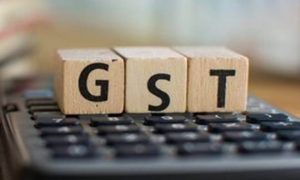Income Tax Notice News: Experts say that missing or filing income tax return after the due date, filing it incorrectly, and claiming an incorrect tax refund, are among the most common reasons for receiving an income tax notice.
Income Tax Notice News: The Income Tax Department reported a significant rise in the number of Income Tax Returns (ITRs) filed this year — calling the 6.77 crore returns filed till the July 31 deadline a “landmark” moment. The I-T Department begins processesing the returns after the taxpayers have filed and verified it. And in case a discrepancy is found in the uploaded data, the department issues a tax notice. Experts say that missing or filing income tax return after the due date, filing it incorrectly, and claiming an incorrect tax refund, are among the most common reasons for receiving an income tax notice.
Read More: What is Section 80D? What are the tax benefits of health insurance policies?
While tax notices can be intimidating and stressful for many people, Vertika Kedia, CA and co-founder of Tax2win, says that it’s important to remember that a tax notice is not necessarily an indication of wrongdoing on the part pf the taxpayer. “Tax departments routinely review returns to ensure compliance with tax laws and to catch any errors or discrepancies that might arise due to various reasons, including simple mistakes,” she enlightens.
It is important to know about the different types of notices issued by the Income Tax Department, because each type of notice serves a specific purpose and requires a distinct response.
Talking about these notices, the co-founder of Tax2win has listed these most common Income Tax notices that tax payers receive from the I-T Department —
1) Income Tax Intimation u/s 143(1)
“An ‘Intimation under Section 143(1)’ is an automated communication from the Income Tax Department that provides an initial assessment of a taxpayer’s return. It informs taxpayers about mathematical errors or necessary changes in their tax return,” Vertika says. She further informs that although receiving such an email notification might cause concern, it’s generally not a cause for worry because this notification doesn’t indicate an order or examination by the I-T Department.
How to respond to the Income Tax notice?
The Intimation under Section 143(1) notice can pertain to matters such as eligibility for tax refunds, due tax or interest payments.
2) Income Tax Notice u/s 142(1)
Vertika informs that a ‘Notice under Section 142(1)’ is a formal communication issued by the Income Tax Department to a taxpayer, requesting them to provide additional information, documents, or explanations related to their tax return. “This notice is a part of the assessment process and is often issued when the tax department requires further clarification or verification regarding certain aspects of the taxpayer’s financial affairs,” she adds.
How to respond to the Income Tax notice?
Responding to Section 142(1) notice is crucial as it allows the taxpayer to present relevant details and evidence to support their return. “Failure to comply with the notice can lead to further scrutiny, penalties, and legal consequences,” she warns.
3) Income Tax Notice u/s 139(9)
A “Notice under Section 139(9)” is sent by the Income Tax Department when discrepancies or issues arise in a taxpayer’s filed return, known as a “Defective Income Tax Return.” Commonly encountered, this notice occurs when the department identifies inconsistencies, inaccuracies, or incompleteness in the provided information.
Read More: Inheritance Tax: What is it? Is it necessary for an NRI to file it?
How to respond to the Income Tax notice?
The notice grants the taxpayer 15 days from notification to rectify errors or furnish additional details before assessment. Vertika says, “Careful review, identification of issues, and accurate response with relevant documentation are vital in this case. Neglecting this notice can lead to return denial by the assessing officer.”
4) Income Tax Notice u/s 143(2)
A “Notice under Section 143(2)” is a formal communication by the Income Tax Department for a comprehensive review of a taxpayer’s return. It signals a detailed scrutiny and requests additional documents and explanations. By conducting thorough scrutiny, the assessing officer wants to ensure that the taxpayer did not do one of the following actions —
● Paid lesser taxes,
● Claimed excessive loss,
● Understated their earnings.
How to respond to the Income Tax notice?
Responding accurately and promptly is crucial to provide justifications and prevent potential penalties or adjustments.
5) Income Tax Notice u/s 148
A “Notice under Section 148” is issued by the Income Tax Department when they have reason to believe that a taxpayer’s income has escaped assessment. “This means that the tax department has identified potential undisclosed income or discrepancies in the taxpayer’s return. The notice is a precursor to reopening the assessment process for a particular year. It allows the tax department to assess and tax the income that wasn’t originally reported,” the co-founder of Tax2win informs.
How to respond to the Income Tax notice?
This notice provides the taxpayer with an opportunity to respond and provide explanations for any discrepancies or unreported income.
6) Income Tax Notice u/s 245
A “Notice under Section 245” is issued by the Income Tax Department when there is an outstanding tax demand that is being adjusted against a refund due to the taxpayer. This notice informs the taxpayer about the adjustment and provides them with an opportunity to respond if they disagree with the adjustment.
How to respond to the Income Tax notice?
Suggesting an appropriate response to this notice, Vertika says, “If the taxpayer believes the adjustment is incorrect and has evidence to support their claim, they can respond to the notice with their disagreement and provide the necessary documentation.”
7) Income Tax Notice u/s 156
A “Notice under Section 156” is a formal communication issued by the Income Tax Department to inform a taxpayer about a tax demand that needs to be paid.
“This notice serves as a demand for the payment of outstanding tax, penalties, interest, or other dues determined through the assessment process. It specifies the amount due, the relevant assessment year, and the due date for payment,” Vertika avers.
8) Income Tax Notice u/s 245
A “Notice under Section 245” is issued by the Income Tax Department when there’s a refund due to the taxpayer, but it’s being adjusted against an outstanding tax demand or liability. This notice informs the taxpayer about the adjustment made and provides details about the amount being adjusted, the outstanding demand, and the reasons for the adjustment. The taxpayer is given the opportunity to respond if they disagree with the adjustment.
How to respond to the Income Tax notice?
“If the taxpayer believes that the adjustment is incorrect or has valid reasons for disagreement, they can provide evidence or explanations to challenge the adjustment,” she sums up saying.



































